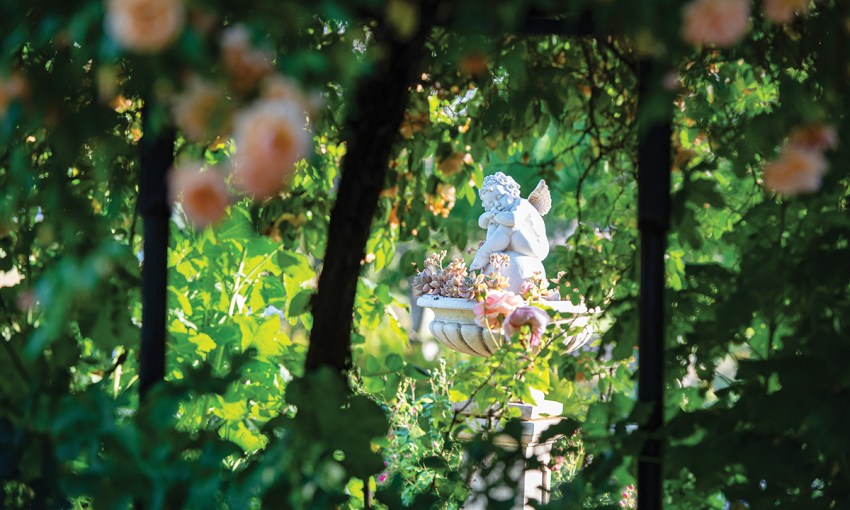Jill Nickolls’ garden at Pinnaroo is a marvellous array of native and European plantings as well as one curiously pretty yet pungent purple lily.
Pungent plant life: The Dracula lily
When the first white explorers arrived in the Southern Mallee in the 1800s, they were greeted by an expanse of country so dry and parched they deemed it too inhospitable to grow anything. With the area devoid of permanent creeks or rivers, early attempts at cultivation failed and many farmers abandoned their forsaken plots.
Yet, after decades of community grit and the discovery of an immense underground water source, Pinnaroo has grown into a fertile farming hub and a town of flourishing gardens, including that of the enigmatic Jill Nickolls.
Not one to be afraid of a bit of hard work, Jill was the driving force behind a community project to transform an unsightly stormwater dam into a wetland oasis that is now a tranquil rest spot for those passing along the Mallee Highway. As the chairperson of Pinnaroo’s Wetlands Committee, Jill has been known to charge into the water in her waders to despatch troublesome bullrushes.
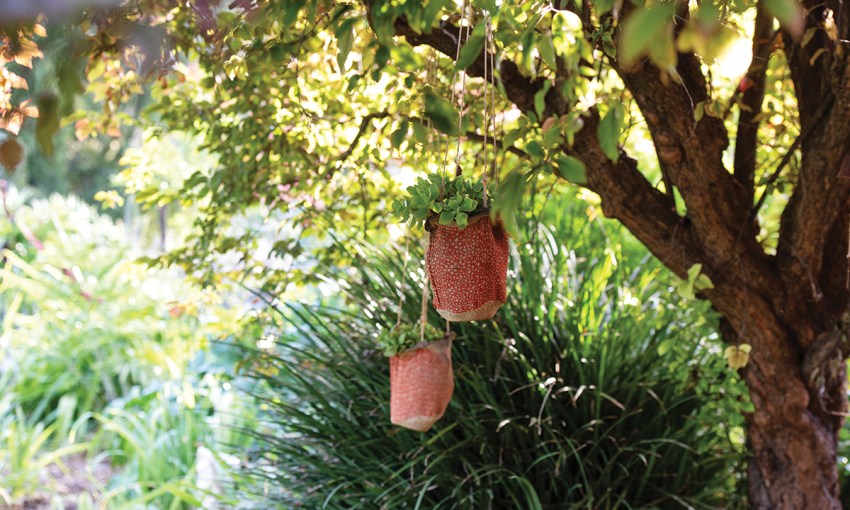
Originally from Kangaroo Island, Jill is a retired teacher who married local farmer, Jeff Nickolls. “I actually came here as a teacher in 1974,” says Jill. “I was planning to go on and travel and I ended up meeting Jeff and marrying. Jeff’s been farming here all his life; we were broadacre farmers and although our sons have taken over from us now, Jeff still goes out working every day. It’s a good life.”
About 17 years ago, the couple moved off the land and into the town, where they bought and renovated a 1930s home surrounded by a large garden. There was work to be done, but the couple inherited a legacy of beautiful trees and plantings established by the previous owner, Laura Moyle.
“You could tell that Laura had been a gardener,” says Jill. “There was a lovely jacaranda, a huge bird of paradise, a crepe myrtle and quite a few roses that gave the garden good bones. We moved the ginormous bird of paradise but it fell apart, so we’ve now got two of them in the garden and they’re beautiful.”
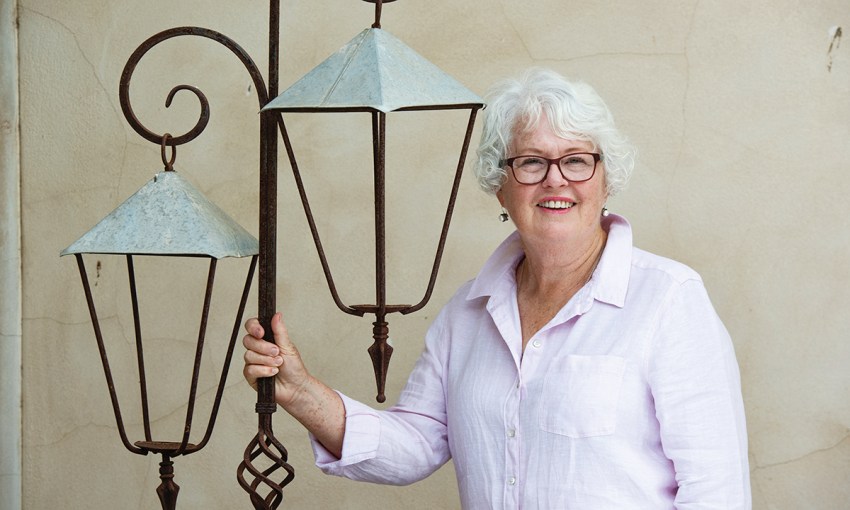
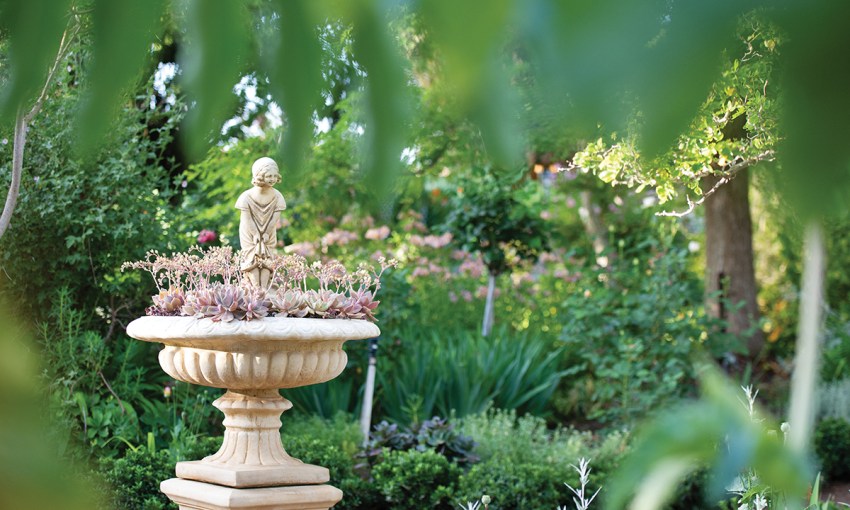
However, it was soon after acquiring the home that Jill began to notice a pungent smell permeating from a corner of the garden, as if something had died.
“I thought ‘uh-oh … there’s something dead over there’. But I found this beautiful lily that had flowered. Laura, who lived here before us, must have planted it,” says Jill.
The Dracula lily, Dracunculus vulgaris, is a species of aroid known by other colourful monikers such as voodoo lily, dragon lily and stink lily. The smell resembles the rotting flesh of the famous corpse flower yet, thankfully, it only gives off an odour for a few days while flowering.
“It’s pretty to look at before it starts to smell because it’s got a spotted green and white stem, a beautiful leaf and a huge flower that is at least a foot long. The flies love it; that’s why it smells so, because it needs them to pollinate it,” says Jill.
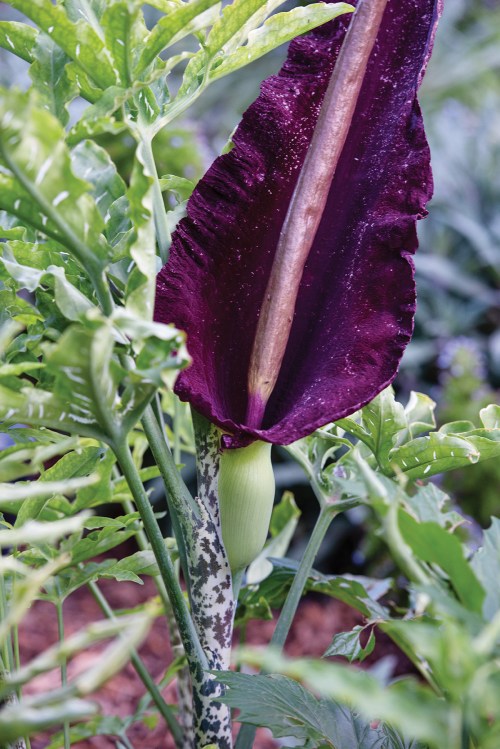
The Dracula lily has been a point of curiosity and interest over the years while proving itself to be a survivor against the summer heat and the winter frosts.
Through trial and error, Jill has weeded out which plants won’t last the annual frost events. “I lost many plants to frost and it was very sad because you’d get them going and next thing they’d be squashed to pieces,” says Jill.
“I rely on the good old faithfuls just to keep the garden full, but I love finding different plants and seeing whether they will be happy at home with us or not.”
Perched on a hill, one side of the garden overlooks the town’s oval, and the other side has an outlook to the countryside, making it feel as though the couple never left the farm. The landscaping, walls, fences and lawns are Jeff’s handiwork. Interspersed with gum trees, the garden is separated into a native section and an English-style cottage garden.
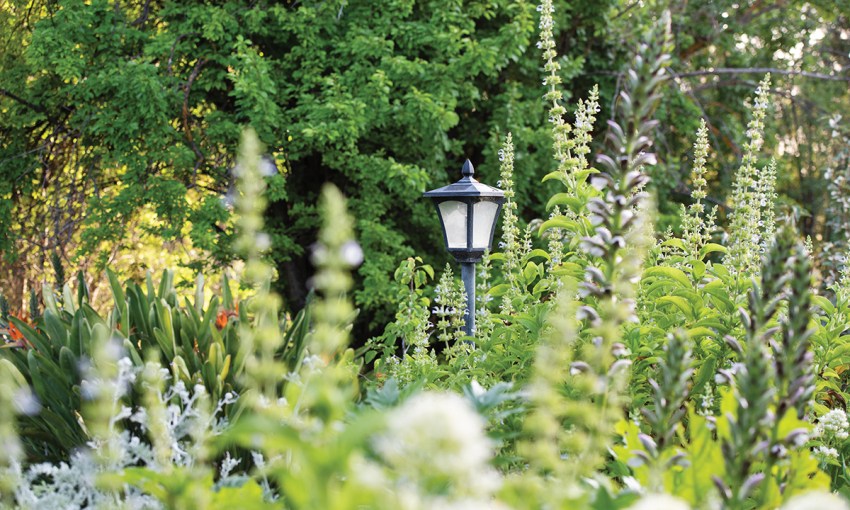
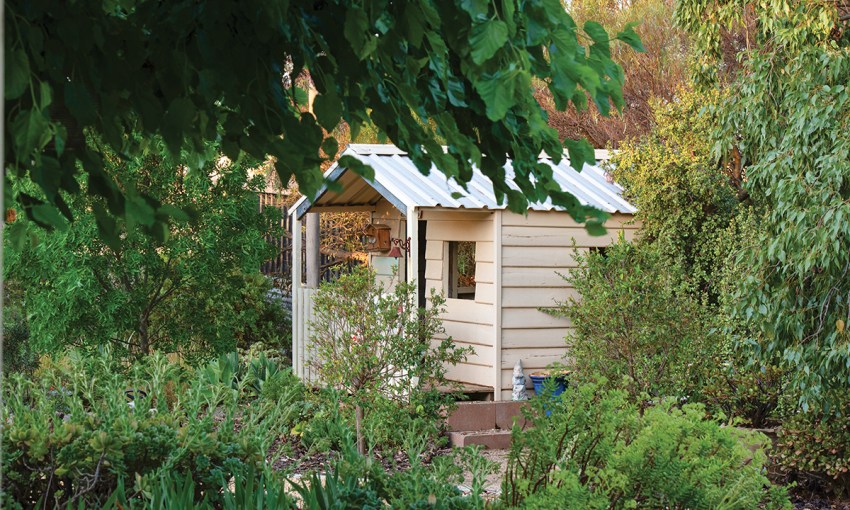
“I do love the English style of gardening, which I know sounds ridiculous to have in Pinnaroo,” says Jill, who is always looking for plants that will bring in the birds, butterflies and bees.
Some of her “old faithful” varieties include French lavender, salvias, winter iris, rosemary, agapanthus, hollyhocks, echiums and succulents. A vibrant blue-flowering rosemary is a legacy of the previous owner, who planted a hedge in memory of her brother who was killed in World War II.
Jeff and Jill’s four sons grew up on the family farm just outside Pinnaroo. Now three of them are farmers in the district and one is a teacher at Loxton. “Our son has an Angus stud, so he supplies us with moo poo and that certainly helps the garden,” says Jill.
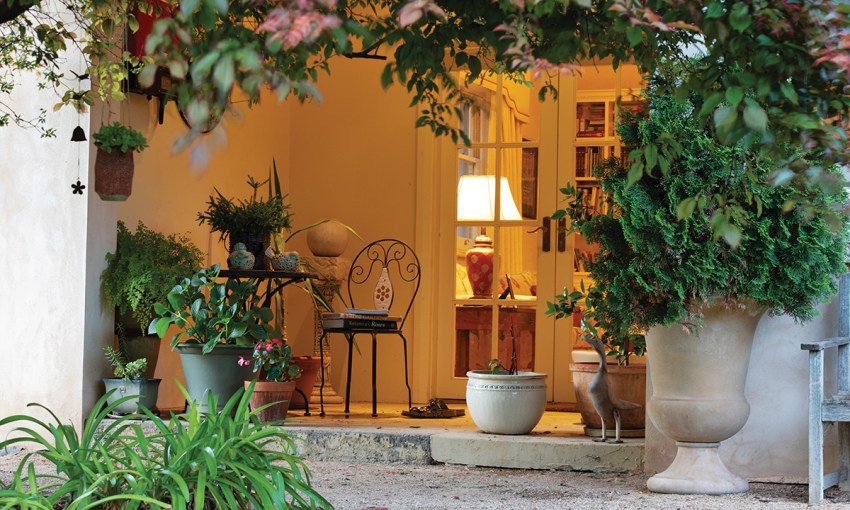
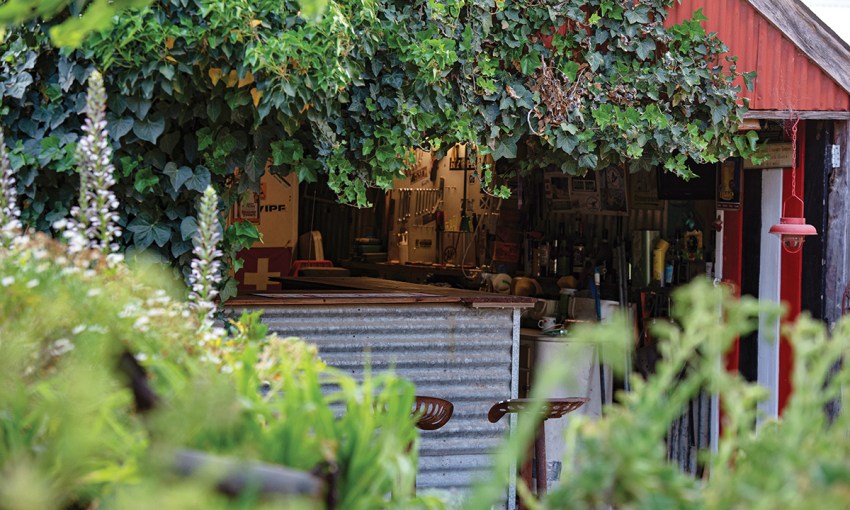
Pinnaroo’s lush green gardens and parks surprise many of those passing through the town, which is a major centre for the surrounding farming areas and a gateway between South Australia and Victoria.
“When Melbourne people came through during the drought they wanted to roll on our lawns because they’d had to switch off their water in the city; they couldn’t believe how green our gardens were here. We’re very fortunate to have good water and we’d be lost without it,” says Jill.
On a hot day, the temperature is noticeably cooler once crossing the threshold onto the property.
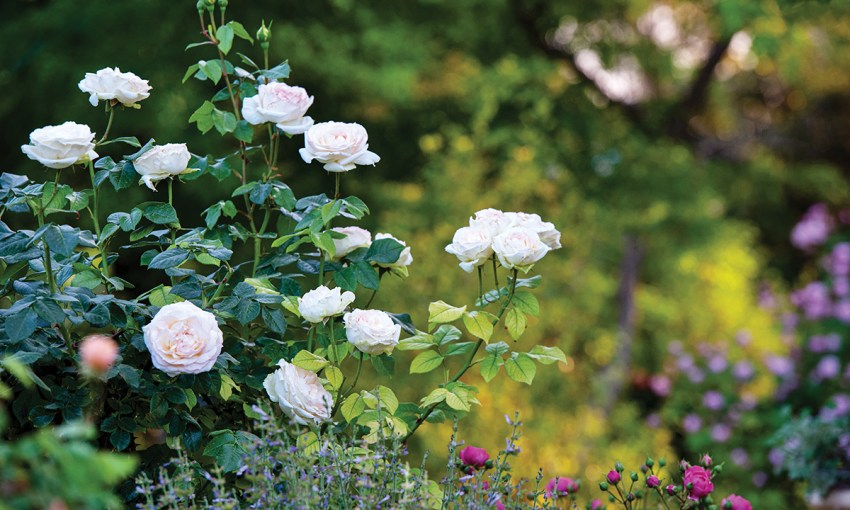
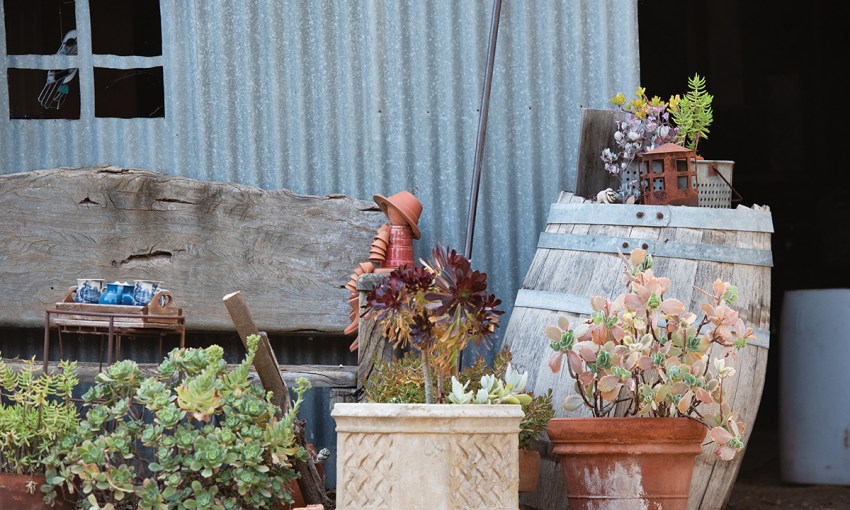
“I think that’s what we like about our gardens, isn’t it? It is an oasis, especially when it’s hot and windy.”
The garden contains plenty of spots to sit down with a refreshment, be it around the fire pit cooking damper in winter, or on the verandah in summer. Birds also seek refuge on hot days when magpies will spread out on the lawns and honeyeaters will stop in for a drink.
The triumph of Jill’s garden is no accident, but a masterpiece fashioned through years of trial and error, learning and attention – as Bram Stoker so wrote in Dracula, “We learn from failure, not from success!”
This story first appeared in the Autumn 2021 issue of SALIFE Gardens & Outdoor Living magazine.
including free delivery to your door.



